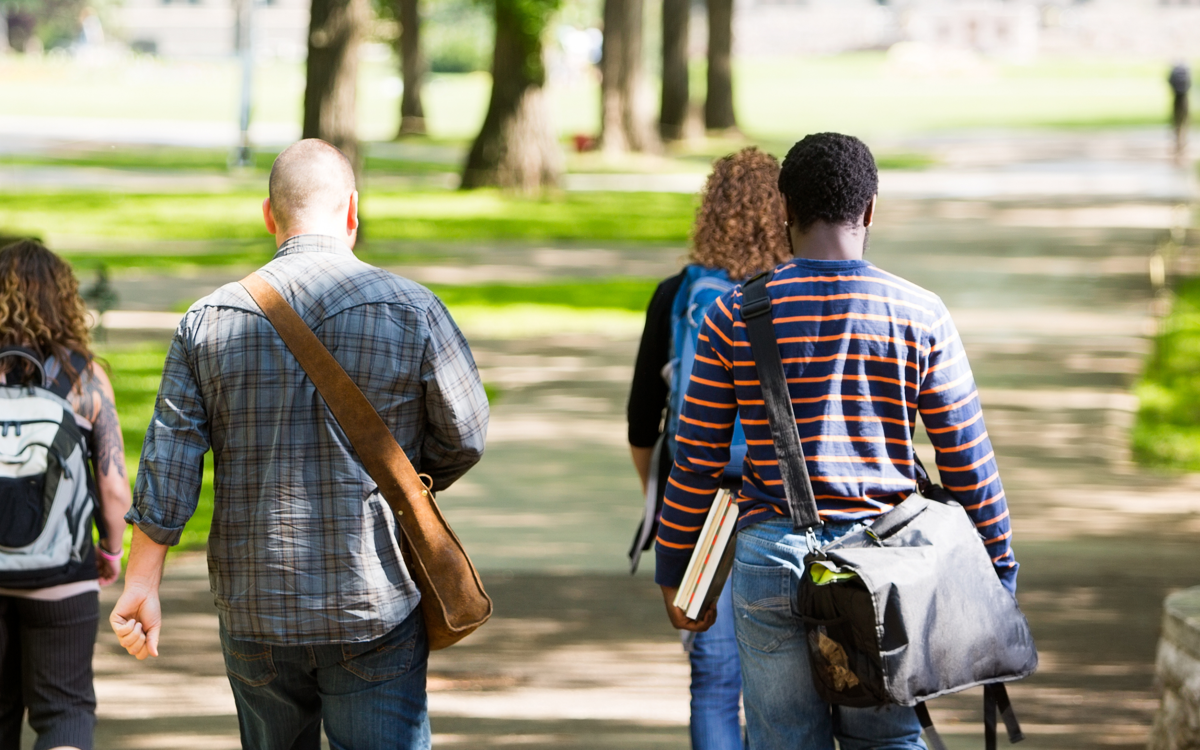

Hester Christmas
ACU Marketing and Communications Officer
The second series of The Internationalist podcast from the ACU explores how the work of universities is being changed by the digital revolution, and how they can use their position to confront the challenges posed by digital technology. With thanks to Professor Giselle Byrnes, Provost of Massey University in New Zealand; Professor Rocky Tuan, Vice-Chancellor of The Chinese University of Hong Kong and students at Massey University for their contributions and ideas in the fifth episode, many of which are outlined below.
How important is the university campus? Before the pandemic, campuses seemed to be at the heart of the university experience. But national lockdowns and the pivot online have left many universities reimagining the future of their physical spaces. As we move forward, universities are taking stock of what a post-pandemic campus could look like in practice, and its role in offering differentiated support to diverse groups.
The campus as a physical anchor for the student experience
For many, the university campus conjures up strong visual references of lecture theatres, libraries, and auditoriums. However, beyond providing a physical place for learning, the campus provides so much more for students – as seen at Massey University in New Zealand.
The biggest benefit of being on campus is collaboration with others. If you run into any mental blocks you can work through it, versus when you’re at home and you have to consult the vast internet

The on-campus experience creates organic routes for socialising and peer-to-peer learning, which is echoed by Professor Giselle Byrnes who suggests that this is a critical part of the holistic university experience.
Teaching in experiential mode drives spontaneous and informal conversations which you cannot always replicate online. Similarly, impromptu and informal learning exchanges are enhanced by a mix of participants; mature students often come with professional and general life experiences to share. The notion of learning through discourse is key to the ‘flipped classroom’ approach which has long been part of the pedagogy at Massey University, and focuses on discussion and leaves the acquisition of learning materials to happen outside of the classroom.
Beyond the educational value, the campus represents a significant time in a student’s life socially.
Universities have been around for a long time, and they come with years of history and culture that you can’t get from watching a monitor.

Professor Rocky Tuan sees being on a university campus as a formative experience for students. For 18-22-year-olds, attending university means being around a high concentration of people who are around the same age, are going through similar biological changes, and have similar life goals and aspirations. Removing the physical campus would put this demographic at a disadvantage.
Evolving student populations: catering for different demographics
When we think of who the campus is designed for, however, we need to broaden our thinking beyond school-leavers. With 57% of their students aged over 25, Massey University’s student population is considered mature. More than 60% of students are studying part time, and 50% studying via distance and online learning. Professor Tuan projects that universities in the future will see more students in their 40s or 50s – whether they are ‘empty nesters’ seeking new opportunities or those undergoing career changes.
As the demographic profile of students evolves, should the campus change with it? Arguably, online modes of learning cater to a mature demographic by enabling students to fit university study around employment and other responsibilities. Students come from different places and start their learning at different stages in their lives. Playing to their strengths requires a range of levels of support which can be customised to learning needs.
Reimagining the campus of the future
Taking stock of the benefits and disadvantages of online and on-campus learning, where does this leave university campuses moving forward? Massey University is fortunate to be both back on-campus and online with a blended model of learning to consolidate their academic offering. Prof Byrnes points out that this also has benefits for staff workloads – in particular, ensuring that research-active staff have sufficient time to carry out their research.
Inevitably, there are some courses that are easier to translate to online delivery. Professor Tuan highlights that the importance of a cost-benefit analysis when assessing the necessity of building large spaces to accommodate thousands of students. With large lecture halls, interaction is often minimal. On the other hand, subjects such as chemistry require practical and hands-on interaction which cannot always be replicated online.
The sustainability of campuses is also important to consider in this context. Concerns about campuses encroaching into local areas, public health issues as we continue to battle this pandemic and prepare for the next one, and the looming climate crisis prompt us to question whether we should be expanding campuses at all. Prof Tuan believes that – whilst it is not necessarily easy – it is possible to build university campuses sustainably. The Chinese University of Hong Kong (CUHK) is working towards a goal of 2038 to be carbon neutral, and has just tested a brand-new kitchen waste machine for campus restaurants that liquidises 97% of their waste to be used as biofuel.
There are also implications for the future of internationalisation. If universities have a responsibility to educate the next generation of global citizens, how can they achieve this without international exposure? Digital technology may again be the answer here, through virtual mobility. CUHK successfully delivered a virtual student exchange programme last year with 26 universities on four continents, featuring coursework and co-curricular cultural immersion experiences.
While digital technology has pushed the boundaries widening access to higher education, the sense of university culture is still rooted in the physical space of the campus for some. To effectively uphold equity, access and inclusion in higher education, universities need to think creatively about the opportunities and insights the pandemic has generated to define the campus of the future.
You can discover more podcast episodes here, or by searching for The Internationalist on your preferred podcast platform.
